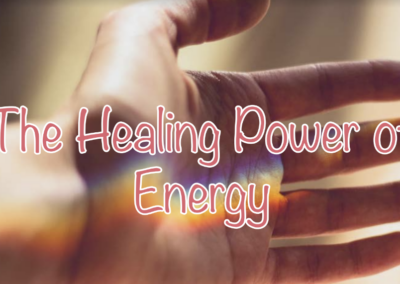Vibrational medicine refers to a holistic approach to healing that utilizes various forms of vibration, such as sound, touch, light, and energy, to balance and restore the body’s natural frequency. This practice is based on the principle that all living beings are made up of energy and vibration and that by influencing these vibrations, it is possible to promote healing and well-being.
The concept of vibrational medicine can be traced back to ancient civilizations, such as the Egyptians, who used sound and music in their healing practices. In modern times, several researchers, including James Oschman and James Gerber, have studied and developed the concept of vibrational medicine. These researchers have contributed to our understanding of the biophysics of vibration and its role in the healing process.
This article aims to provide a comprehensive overview of vibrational medicine, including its definition, history, biophysics, therapeutic applications, evidence, safety, and limitations. Throughout the following pages, we will delve into the various forms of vibrational medicine, such as sound therapy, vibrational touch therapy, energy medicine, vibrational massage, vibrational acupuncture, and vibrational healing and meditation. We will also examine the role of James Oschman and James Gerber in the study of vibrational medicine and will summarize the current evidence and research on the efficacy of this approach to healing. By the end of this article, the reader will have a clear understanding of vibrational medicine and its potential benefits and limitations.
Biophysics of Vibrational Medicine
The biophysics of vibrational medicine is a complex and fascinating area of study, and it is essential to understand the principles and mechanisms behind this healing approach to appreciate its potential benefits and limitations.
Definition and explanation of vibration
Vibration refers to the rapid and repetitive movement of an object or substance back and forth around a fixed point. In the context of vibrational medicine, vibration refers to the frequency of energy in the body, which various forms of vibration, such as sound, touch, light, and energy, can influence. Vibration can be measured in Hertz (Hz) and is often categorized into different frequency ranges, such as low-frequency vibrations (infrared and radio waves) and high-frequency vibrations (ultraviolet and X-rays).
Understanding the role of vibrations in the human body

The human body is made up of various types of vibrations, including mechanical, electrical, and acoustic vibrations. Mechanical vibrations refer to the movement of physical matter, such as the movement of bones and muscles. Electrical vibrations refer to the flow of electricity in the body, such as the electrical signals that are transmitted by the nervous system. Acoustic vibrations are produced by sound, such as the vibrations that are generated by the beating of the heart or the sound of the voice.
Vibrations play a crucial role in the functioning of the human body, as they are involved in many physiological processes, such as circulation, respiration, and digestion. In this section, we will explore the role of mechanical, electrical, and acoustic vibrations in the human body and their impact on various physiological processes.
Mechanical vibrations:
Mechanical vibrations refer to the movement of physical matter, such as the movement of bones and muscles. The mechanical vibrations produced by the movement of bones and muscles help to promote blood flow, which is essential for delivering oxygen and nutrients to the cells and removing waste products. For example, when we exercise, the movement of our muscles generates mechanical vibrations that help to increase the flow of blood and oxygen to the muscles, which is crucial for supporting muscle function and endurance.
In addition to promoting blood flow, mechanical vibrations can also help to stimulate the immune system. Research has shown that mechanical vibrations, such as those produced by massage or vibrational touch therapy, can help to activate the immune system by increasing the production of immune cells and cytokines, which are essential for fighting infections and diseases.
Electrical vibrations:
Electrical vibrations refer to the flow of electricity in the body, such as the electrical signals that are transmitted by the nervous system. Electrical vibrations play a key role in coordinating movement, sensation, and thought. For example, the electrical signals transmitted by the nervous system are responsible for controlling the movement of our muscles, as well as transmitting sensations of touch, pain, and temperature to the brain.
Electrical vibrations also play a role in regulating the body’s circadian rhythm, the internal biological clock regulating the sleep-wake cycle. Research has shown that electrical vibrations, such as those generated by the brain and the heart, can help synchronize the body’s internal clock with the external environment, which is essential for maintaining a healthy sleep-wake cycle and overall well-being.
Acoustic vibrations:
Acoustic vibrations are produced by sound, such as the vibrations that are generated by the beating of the heart or the sound of the voice. Acoustic vibrations play a crucial role in the functioning of the human body, as they are involved in processes such as hearing, speech, and communication. For example, the acoustic vibrations generated by the sound of our voice can help to convey emotions and express thoughts, which are essential for communication and building relationships.
In addition to their role in communication and speech, acoustic vibrations have also been found to have therapeutic effects on the human body. For example, sound therapy, which involves exposing the body to therapeutic sounds, has been found to reduce symptoms of anxiety and depression, improve sleep quality, and enhance overall well-being. Research has shown that the acoustic vibrations generated by therapeutic sounds can help balance the body’s energy and promote relaxation, leading to improved physical and mental health.
The role of vibrations in the human body is complex and multifaceted, as they are involved in many physiological processes, such as circulation, respiration, and digestion. By understanding the role of mechanical, electrical, and acoustic vibrations in the human body, we can gain a deeper appreciation for the importance of vibrations in maintaining health and well-being.
The Concept of Entrainment in Vibrational Medicine

The concept of entrainment refers to the phenomenon of two or more vibrational systems coming into synchrony with one another. In the context of vibrational medicine, entrainment refers to the synchronization of the internal vibrations of the body with external vibrations, such as those generated by sound or touch therapy. The idea is that exposing the body to specific frequencies and vibrations can bring it back into a state of balance and harmony, promoting healing and well-being.
One of the key principles of entrainment is that when two or more vibrating systems come into close proximity, the frequency of one system will begin to influence and shape the frequency of the other. This is often referred to as frequency following response. This phenomenon can be seen in many everyday examples, such as two pendulum clocks hanging side by side, eventually synchronizing with one another.
In vibrational medicine, the theory is that exposing the body to specific vibrations can be entrained and brought back into a state of balance. For example, in the practice of sound therapy, singing bowls, gongs, and tuning forks can produce specific frequencies that help balance and harmonize the body’s internal vibrations. Similarly, in the practice of touch therapy, the use of massage and other manual techniques can generate vibrations that help to restore balance to the body’s internal systems.
In addition to the above examples, many other forms of vibrational medicine utilize the concept of entrainment, such as light therapy, color therapy, and vibrational essences. The common thread among these practices is the belief that exposing the body to specific frequencies and vibrations can bring it back into a state of balance and harmony, promoting healing and well-being.
The concept of entrainment is a central idea in the field of vibrational medicine and is believed to play a crucial role in promoting healing and restoring balance to the body. By exposing the body to specific vibrations, the internal vibrations of the body can be brought into synchrony with these external vibrations, leading to a state of balance and harmony and promoting healing and well-being.
The Importance of Vibration in Healing and Therapy: An Overview
Vibration is an essential aspect of the human experience and plays a crucial role in our physical, emotional, and spiritual well-being. In the field of vibrational medicine, the therapeutic use of vibration has been explored for centuries, with the understanding that vibrations can have a profound impact on the body and its ability to heal.
One of the key ways in which vibration can have therapeutic effects is by balancing the body’s energy. In traditional Chinese medicine, for example, the concept of qi (or “life force”) is central to understanding health and illness. According to this perspective, when qi flows freely through the body, we experience good health, while blockages or imbalances in the flow of qi can lead to illness. Vibrational medicine practices, such as acupuncture and sound therapy, can help to balance the flow of qi, promoting health and well-being.
In addition to balancing energy, vibrations can also help to reduce stress and promote relaxation. This is due in part to the physiological effects of vibration on the body, such as the release of stress hormones and the activation of the relaxation response. For example, sound therapy, which involves exposing the body to therapeutic sounds, has been found to reduce symptoms of anxiety and depression, improve sleep quality, and enhance overall well-being.
Vibrational touch therapy involves applying vibrations to the body through touch and has also been found to have therapeutic effects. This practice can include techniques such as massage, chiropractic, and osteopathy, which utilize gentle vibrations to improve joint mobility, reduce pain, and promote relaxation. These techniques can help to activate the body’s natural healing mechanisms, reducing inflammation and promoting tissue repair.
Vibration plays a crucial role in the healing and therapeutic processes, with the ability to balance energy, reduce stress, and promote relaxation. The therapeutic use of vibration can be seen in many forms of vibrational medicine, including sound therapy, touch therapy, and various forms of energy healing. Whether through therapeutic sound, touch, or light, the application of vibrations can profoundly impact the body and its ability to heal.
The Contributions of James Oschman and James Gerber to the Study of Vibrational Medicine
James Oschman and James Gerber are renowned for their extensive research and contributions to the field of vibrational medicine. Their works have significantly impacted our understanding of the biophysics of vibrations and how they can be applied in healing and therapy.
Oschman, a researcher and author, has spent many years exploring the effects of vibrations on the human body and its various physiological processes. He has studied the role of vibration in circulation, respiration, and the immune system and has published several books and articles on the subject. Oschman’s work has provided a solid foundation for the understanding of the role of vibration in the healing process and its therapeutic effects.
Gerber, a clinician, and researcher has focused on the application of vibrations in energy medicine. He has developed several techniques for using vibrations to balance energy and promote healing in the body, including Vibrational Touch Therapy, which involves the application of vibrations to the body through touch. Gerber has also written several books and articles on vibrational medicine and has taught workshops and courses to healthcare professionals, further advancing the field of vibrational medicine.
Together, the works of Oschman and Gerber have helped to establish vibrational medicine as a legitimate and evidence-based approach to healing. They have provided valuable insights into the biophysics of vibrations and how they can be harnessed for therapeutic purposes. The research and teachings of these two experts have helped advance the field of vibrational medicine and provided practical applications for healthcare professionals to incorporate into their practices, improving the overall health and well-being of patients.
The contributions of James Oschman and James Gerber to the field of vibrational medicine have been significant, and their works continue to shape our understanding of the biophysics of vibrations and their role in healing and therapy. Their research has provided a foundation for developing vibrational medicine as a viable approach to treating various health conditions and promoting overall health and well-being.
Therapeutic Applications of Vibrational Medicine
The use of vibrations for therapeutic purposes has been practiced for thousands of years and is now gaining recognition as a legitimate and evidence-based approach to healing. In this section, we will explore some of the key therapeutic applications of vibrational medicine, including sound therapy, vibrational touch therapy, energy medicine, vibrational massage, vibrational acupuncture, and vibrational healing and meditation. These different modalities of vibrational medicine all have unique applications and mechanisms of action, but they are united by their use of vibrations to promote healing and balance in the body.
Sound Therapy
Sound therapy is a form of vibrational medicine that involves the use of therapeutic sounds to promote healing and balance in the body. This can include music, singing bowls, tuning forks, and other instruments that produce vibrations that can be used to entrain the body.
Sound therapy often involves the use of different sound frequencies to produce specific therapeutic effects. For example, low-frequency sounds, such as those produced by singing bowls or didgeridoos, can help to promote relaxation and reduce stress. On the other hand, higher-frequency sounds, such as those produced by tuning forks or gongs, can help to stimulate and energize the body.
One common example of sound therapy is music therapy, in which music is used to improve physical, emotional, cognitive, and social functioning. Another example is the use of singing bowls, which are bowls made of metal or crystal that produce deep, resonant sounds when struck or played with a mallet. These sounds can help to calm the mind and promote relaxation.
Sound therapy has been found to have a range of therapeutic effects, including reducing symptoms of anxiety and depression, improving sleep quality, and enhancing overall well-being. Research has also shown that sound therapy can help to improve cognitive function, boost the immune system, and reduce pain and stress.
Sound therapy is a powerful form of vibrational medicine that involves the use of therapeutic sounds to promote healing and balance in the body. With its ability to produce a range of therapeutic effects, sound therapy is a valuable tool for promoting physical and emotional well-being.
Vibrational Touch Therapy
Vibrational Touch Therapy is a form of alternative medicine that makes use of the therapeutic effects of vibration to help the body heal and promote relaxation. This therapy involves the application of vibrations to the body through touch, usually using specialized tools such as vibrating foam rollers, massage balls, or other vibrating devices. Touch therapy can also be performed manually through shaking or tapping techniques.
The therapeutic effects of vibrational touch therapy are based on the idea that vibrations can help to stimulate circulation, promote relaxation, and reduce pain. The vibrations produced by touch therapy stimulate the muscles, tissues, and nerves, causing them to contract and relax, which can help to improve joint mobility and flexibility. Additionally, the vibrations can stimulate the release of endorphins, the body’s natural pain-relieving substances, leading to a reduction in pain and discomfort.
Vibrational touch therapy has been used to treat a range of conditions, including chronic pain, muscle tension, and joint problems such as arthritis and frozen shoulder. In addition, this therapy has also been found to be effective in reducing symptoms of anxiety, stress, and depression, as well as in improving sleep quality and promoting overall well-being.
One example of vibrational touch therapy is the use of vibrating foam rollers, which athletes and fitness enthusiasts commonly use to improve muscle recovery and performance. The vibrations generated by the roller help to increase circulation, promote relaxation, and reduce muscle tension, making it easier for athletes to perform at their best.
Another example is the use of vibration therapy in physical therapy, where it is used to help patients recover from injuries and improve joint mobility. Physical therapists may use vibrating massage tools to help reduce pain, swelling, and stiffness in affected areas while also helping to improve circulation and promote healing.
Vibrational touch therapy is a promising alternative therapy that has been found to have a range of therapeutic benefits for the body. Whether used as a standalone therapy or as part of a more comprehensive treatment plan, it offers a safe and effective way to promote healing and improve well-being.
Energy Medicine
Energy medicine is a holistic approach to healing that recognizes the importance of the body’s energy systems in maintaining overall health and well-being. Energy medicine practitioners believe that illness and disease result from imbalances in the body’s energy systems and that restoring balance to these systems can promote healing and prevent future illness.
One of the most well-known techniques in energy medicine is acupuncture, which involves the insertion of fine needles into specific points on the body to stimulate the flow of energy, or “Qi.” Acupuncture is effective in treating a range of conditions, including chronic pain, headaches, and digestive problems.
Another technique used in energy medicine is Reiki, a Japanese healing technique that involves the placement of hands on or near the body to balance the body’s energy systems. Reiki has been found to be effective in reducing stress, anxiety, and depression and promoting relaxation.
Light therapy is also used in energy medicine, as different colors of light are believed to have different effects on the body’s energy systems. For example, red light is believed to stimulate the immune system, while blue light is believed to calm the mind and promote relaxation.
Vibrational Massage
A vibrational massage is a form of massage therapy that uses vibrations to target the muscles and soft tissues of the body. The main idea behind vibrational massage is to stimulate the tissues to promote relaxation, reduce muscle tension, and improve circulation. Various techniques and tools can be used for vibrational massage, including massage balls, foam rollers, and manual techniques like shaking or tapping.
Vibrational massage works by using mechanical vibrations to stimulate the tissues and activate the body’s natural healing processes. The vibrations produced by the massage tool or manual technique can help increase blood flow to the target area, improving the delivery of oxygen and nutrients to the cells and help to remove waste products. This increased blood flow can also help to reduce muscle tension, promote relaxation, and improve overall circulation.
One example of a vibrational massage technique is the use of a foam roller. Foam rollers are commonly used in fitness and rehabilitation, as they can be used to target specific muscle groups and help to release tightness and tension. By applying pressure to the foam roller and rolling it along the target muscle, the user can generate vibrations that help to stimulate the tissues and promote relaxation.
Another example of vibrational massage is the use of massage balls. Massage balls can be used to target specific areas of the body, such as the feet, hands, or back. By applying pressure to the massage ball and rolling it along the target area, the user can generate vibrations that help to stimulate the tissues and promote relaxation. Massage balls can be particularly useful for individuals with specific conditions, such as plantar fasciitis or carpal tunnel syndrome, as they can be used to target specific areas of pain or tension.
Vibrational Acupuncture
Vibrational acupuncture is a holistic therapy that combines the principles of traditional acupuncture with the use of vibrational energy. This approach involves the application of vibrations to specific points on the body, referred to as acupuncture points, in order to stimulate the flow of energy and promote balance and healing. The vibrations can be delivered through specialized acupuncture needles that produce vibrations or through manual techniques like tapping or vibrating the acupuncture points.
Studies have shown that vibrational acupuncture is an effective treatment for various health conditions, including pain management, stress reduction, and anxiety relief. For example, one study found that vibrational acupuncture significantly reduced chronic low back pain compared to traditional acupuncture. Another study found that vibrational acupuncture was effective in reducing symptoms of anxiety and depression in patients with psychiatric disorders. These findings highlight the potential of vibrational acupuncture as a safe and effective complementary therapy for promoting overall health and well-being.
Vibrational Healing and Medicine
Vibrational healing and meditation is a holistic approach to wellness that combines the principles of vibrational medicine with the practice of meditation. This modality is based on the idea that vibrations can influence the body and that these vibrations can be harnessed to promote balance, healing, and relaxation. This can be achieved through a range of techniques, such as the use of sound, touch, and movement.
Sound therapy is often used in vibrational healing and meditation, as therapeutic sounds can be used to entrain the body and promote relaxation. For example, singing bowls or other musical instruments can help create a harmonious and calming environment, reducing stress and promoting a sense of inner peace.
In vibrational touch therapy, vibrations are applied to the body through touch, using massage tools like foam rollers or massage balls or manual techniques like tapping or shaking. This has been found to be effective in reducing pain, improving joint mobility, and promoting relaxation.
Movement-based techniques, such as dance or yoga, can also be used in vibrational healing and meditation. By integrating conscious movements with breath, these techniques can help to balance the body’s energy and promote a deep sense of relaxation and inner peace.
Evidence and Research on Vibrational Medicine
Vibrational medicine is a rapidly growing field that seeks to understand the effects of vibrations on the body and how they can be used to promote health and wellness. Over the past few decades, a growing body of evidence and research has emerged to support the efficacy of vibrational medicine. In this section, we will examine the current state of the evidence and research on vibrational medicine, including scientific studies, clinical trials, comparisons with traditional medicine, and the limitations and challenges of conducting research in this field.
Scientific studies on Vibrational Medicine
Scientific studies on vibrational medicine aim to understand the underlying mechanisms and biophysics of vibrations and their effects on the body. These studies use a variety of techniques, including animal models, in vitro studies, and human trials, to investigate the effects of vibrations on physiological processes such as circulation, respiration, and immune function. A growing body of evidence suggests that vibrations can have a range of therapeutic effects, including reducing pain, improving joint mobility, and promoting relaxation.
Some notable scientific studies on vibrational medicine include work by Dr. Richard Saltzman and colleagues at Johns Hopkins University, who used animal models to study the effects of vibrations on bone density and found that vibrations can increase bone growth and improve bone health. Another study by Dr. Joerg Dieter Traeber and colleagues at the University of Freiburg in Germany used in vitro techniques to investigate the effects of vibrations on the proliferation of human cancer cells and found that vibrations can reduce the growth of these cells.
Additionally, there have been several human trials investigating the effects of vibrations on various physiological processes. For example, a study by Dr. Joel Robert de la Rosa and colleagues at the University of Puerto Rico School of Medicine used human subjects to investigate the effects of vibrations on muscle activation and found that vibrations can increase muscle activation and improve muscle function. Another study by Dr. Crystal Lee and colleagues at the University of California, Los Angeles, used human subjects to investigate the effects of vibrations on pain perception and found that vibrations can reduce pain and improve overall well-being.
Clinical trials on vibrational medicine aim to evaluate the safety and efficacy of vibrational medicine in real-world settings. These trials typically involve large groups of participants and are designed to assess the impact of vibrational medicine on specific health conditions, such as chronic pain, stress, and anxiety. A growing body of evidence suggests that vibrational medicine can effectively treat a range of conditions and improve overall health and well-being.
Clinical trials on vibrational medicine have been conducted by a range of institutions, including universities, research centers, and healthcare organizations. These trials have used a variety of vibrational therapy techniques, including sound therapy, vibrational touch therapy, and energy medicine. The results of these trials have shown promising results in treating various health conditions, including chronic pain, stress, and anxiety.
For example, a clinical trial conducted by the University of California, Los Angeles (UCLA) investigated vibrational therapy’s use to treat chronic pain. The study found that participants who received vibrational therapy reported a significant reduction in pain compared to those in the control group.
Another clinical trial conducted by the University of Oregon investigated the effects of vibrational therapy on stress and anxiety in cancer patients. The study found that participants who received vibrational therapy reported a significant reduction in stress and anxiety compared to those in the control group.
These and other clinical trials on vibrational medicine provide strong evidence for the efficacy of vibrational therapy in improving overall health and well-being. Further research is needed to fully understand the effects of vibrational therapy and to determine its optimal use in the treatment of various health conditions.
These studies are just a few examples of the growing body of scientific evidence supporting the use of vibrational medicine in therapeutic settings. Further research is needed to fully understand the mechanisms and effects of vibrations on the body, but the results of these studies suggest that vibrations have the potential to offer new and innovative therapeutic approaches for a range of medical conditions.
Comparison with traditional medicine
Vibrational medicine and traditional medicine are two distinct approaches to healthcare that have different philosophies, methods, and goals. While traditional medicine has a long history of effectively treating acute and life-threatening conditions, vibrational medicine focuses on restoring balance and harmony in the body through the use of vibrations. The two approaches can be compared based on their effectiveness, safety, cost, and impact on quality of life.
Traditional medicine typically relies on drugs and surgical interventions to treat health conditions, while vibrational medicine employs a more holistic approach that aims to address the root cause of a problem, rather than simply suppressing symptoms. For example, traditional medicine may use drugs to relieve pain, while vibrational medicine may use vibrations to improve circulation, reduce inflammation, and promote healing.
One of the key advantages of vibrational medicine is that it is generally safe, with few side effects, compared to traditional medicine. In many cases, vibrational medicine can be used in combination with traditional medicine to enhance its effectiveness without adding to the risk of adverse events. For example, vibrational therapy has been found to improve the efficacy of drugs in treating chronic pain and reduce the side effects of chemotherapy.
Another advantage of vibrational medicine is its cost-effectiveness. Vibrational medicine often involves low-cost interventions, such as sound or light therapy, which can be performed in a home setting, reducing the need for expensive equipment and hospitalization. This can be especially beneficial for individuals with chronic conditions, who may require frequent treatments and interventions over an extended period of time.
Finally, vibrational medicine can have a positive impact on quality of life, by reducing stress, improving sleep quality, and promoting overall well-being. This is in contrast to traditional medicine, which may have a negative impact on quality of life due to side effects and limitations in its ability to address the root cause of a problem.
Vibrational medicine and traditional medicine are two distinct approaches to healthcare, each with its own strengths and weaknesses. While traditional medicine is effective in treating acute and life-threatening conditions, vibrational medicine can complement and enhance traditional medicine, leading to better patient outcomes.
Safety and Contraindications of Vibrational Medicine
The safety of vibrational medicine has been a subject of concern and interest among healthcare providers and patients alike. However, the evidence suggests that vibrational medicine is generally safe and well-tolerated, with a low risk of adverse effects when performed by trained practitioners. It is important to note that like any medical intervention, vibrational medicine may have certain safety concerns, precautions, and contraindications that should be considered.
One of the main safety concerns with vibrational medicine is the potential for overstimulation, which can lead to discomfort or pain. This is why it is essential to start with a low frequency and gradually increase the intensity of the vibrations. Additionally, people with certain medical conditions, such as osteoporosis, may be at a higher risk for injury from vibrational therapy and should consult with their healthcare provider before undergoing treatment.
Another important consideration is that vibrational medicine may interact with other treatments and medications. For example, if someone is taking blood-thinning medications, the increased circulation from vibrational therapy may increase the risk of bleeding. Therefore, discussing all treatments and medications with a healthcare provider before undergoing vibrational therapy is important.
Finally, vibrational medicine has certain contraindications, such as pregnancy, certain heart conditions, and certain skin conditions. In these cases, vibrational therapy may not be appropriate or may need to be adjusted to ensure the safety and well-being of the patient.
Vibrational medicine is generally safe and well-tolerated, with a low risk of adverse effects. However, it is crucial to be aware of the safety concerns, precautions, and contraindications and to discuss any concerns with a healthcare provider before undergoing treatment.
The Future of Vibrational Healing
The future of vibrational medicine holds great promise for improving the health and well-being of individuals. As more research is conducted, the benefits of vibrational medicine are becoming increasingly well understood, and its applications are expanding into new areas. Here are some of the areas where vibrational medicine is likely to have a significant impact in the coming years:
Integration into Mainstream Healthcare
Vibrational medicine is becoming increasingly recognized by the medical community as a safe and effective complementary therapy. This has led to its integration into mainstream healthcare, and a growing number of healthcare providers are offering vibrational therapies as part of their treatment programs. This trend is likely to continue in the coming years, leading to wider acceptance and adoption of vibrational medicine.
Advances in Technology
Advances in technology are likely to play a major role in the future of vibrational medicine. The development of new and more sophisticated vibrational therapy devices will allow for more targeted and precise treatments, leading to improved outcomes for patients. Additionally, advances in wearable technology and mobile health apps may make vibrational therapy more accessible and convenient for patients, further increasing its popularity and adoption.
Research and Development
The field of vibrational medicine is still in its infancy, and much remains to be learned about its mechanisms and effects. Ongoing research and development will lead to a deeper understanding of the science behind vibrational medicine and a better understanding of its applications. This will allow for the development of new and more effective treatments, as well as an expansion of its applications into new areas.
Expansion into New Areas
The benefits of vibrational medicine are becoming increasingly well-understood, and its applications are expanding into new areas. For example, vibrational medicine is already being used in the treatment of conditions such as chronic pain, stress, and anxiety. In the future, it is likely to be used to treat a wider range of conditions, including neurological and cardiovascular diseases, as well as to enhance athletic performance and recovery.
The future of vibrational medicine is very promising. As more research is conducted, advances in technology are made, and its integration into mainstream healthcare continues, vibrational medicine is likely to play an increasingly important role in improving the health and well-being of individuals.
Closing Thoughts: Exploring the Power of Vibrational Medicine
In conclusion, vibrational medicine represents a promising and innovative approach to health and well-being. Through the use of vibrations, this modality has the potential to restore balance and harmony to the body, reducing pain, stress, and anxiety and improving overall health and well-being. With growing scientific and clinical evidence supporting its efficacy, the future of vibrational medicine is bright, with exciting potential for growth and development in the years to come. Whether used alone or in conjunction with traditional medicine, vibrational medicine has the potential to change the way we approach health and wellness.
Key Terms and Definitions
Energy medicine: A branch of vibrational medicine that focuses on the use of vibrations to balance and harmonize the body’s energy systems.
Vibrational massage: A therapeutic modality that involves the use of vibrations to stimulate the muscles and soft tissues of the body.
Vibrational acupuncture: A therapeutic modality that combines traditional acupuncture with the use of vibrations.
Vibrational healing and meditation: A therapeutic modality that uses vibrations to promote relaxation, balance, and healing in the body.
Scientific studies: Research aimed at understanding the underlying mechanisms and biophysics of vibrations and their effects on the body.
Clinical trials: Evaluations of the safety and efficacy of vibrational medicine in real-world settings.
Traditional medicine: A healthcare approach that typically relies on drugs and surgical interventions.
Chronic pain: Pain that persists for a prolonged period of time.
Stress: A state of emotional, mental, and physical tension caused by adverse events or situations.
Anxiety: A state of unease, such as worry or fear, that can be mild or severe.
Relaxation: A state of reduced physical and emotional tension and increased calmness.
Contraindications: Conditions or circumstances in which a particular treatment or medication should not be used.
Interactions: The effect of two or more substances or treatments on each other.
Energy field: The interconnected network of energy that permeates and surrounds the body.
Vibrational frequency: The number of times that a vibration occurs in a given unit of time,
usually measured in Hertz (Hz).
Biofield therapy: A therapeutic approach that aims to promote healing and balance in the body by altering the energy field.
Harmonic resonance: The phenomenon of energy fields resonating with one another, leading to increased coherence and stability.
Acoustic therapy: The use of sound waves to promote healing and balance in the body.
Phototherapy: The use of light waves to promote healing and balance in the body.
Vibrational medicine device: A device that produces vibrations for therapeutic purposes, such as vibrating foam rollers or massage balls.
Meridian system: A system of channels through which energy flows in the body, as described in traditional Chinese medicine.
Energy healing: A therapeutic approach that aims to promote healing and balance in the body by altering the energy field.
Vibrational massage tool: A tool that is used to produce vibrations for therapeutic purposes, such as vibrating foam rollers or massage balls.







